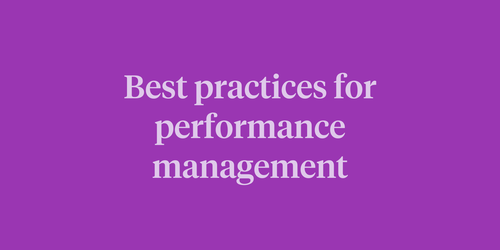
Article

Written by

Writer, Culture Amp
As businesses and offices begin to open in countries around the world, companies in the U.S. are starting to plan for a return to the workplace.
This is a critical time for organizations to survey employees. Surveys provide insight into how teams are feeling and what the top concerns are with regard to an upcoming transition. While we certainly don't have all the answers, we want to call attention to the most critical questions you need to have answered before your employees go back to the office.
We recently released a free Return Readiness Template to help HR leaders track, measure, and manage what matters as companies begin the recovery process. This survey aims to help you understand how your people are feeling, what concerns they may have about returning to the workplace, and help guide what an effective HR strategy might look like. The survey can help you answer important questions, such as:
While many of the Culture Amp survey templates focus on the overall organization, our Return Readiness Template focuses more on the individual's employee experience. To ensure we cover the topics that are front of mind for leaders and HR, we collaborated with several global customers who are transitioning back to the workplace. Focus areas include:
Understanding the overall employee sentiment across each of these areas can help inform what a return-to-work plan might look like and whether existing policies should be reviewed to address the most pressing concerns.
We recommend conducting this survey before employees transition back to the workplace. This will enable you to collect feedback and data to help inform your HR strategy. It'll also put measures in place to help support employees as they transition back to the workplace.
However, make sure you don't launch the survey too early. It would be best if you launch your survey only when you're ready to start making decisions about returning to work. If you launch before that, you risk having the current guidance and information around COVID-19 restrictions change, which may alter employees' attitudes and potentially misinform your return-to-work plans.
Every company should prioritize employee well-being as they return to the office. There are many facets of health and safety to plan for. Here are a few questions you can ask yourself while creating your strategy. They will help you keep your employees protected during the transition.
Finally, there's another big question employers should ask: is it necessary to return to the physical workplace? Even if companies can return to the office, that doesn't mean they have to.
Our data shows that people are adjusting well to remote work. Given this, it's worth considering whether returning to a physical office is necessary for your team – especially for employees with vulnerable immune systems. While these aren't questions we can answer on your behalf, this is an excellent opportunity to rethink how we work altogether instead of simply returning "back to normal."
Employers must navigate many legal complexities as they map out the return to work. We recommend that legal counsel reviews your HR strategy to ensure the company and employees are protected. There are a few key legal issues to pay attention to:
If the majority of your employees are returning to the workplace, you need to think about how to adapt the physical office to be compliant with the restrictions due to COVID-19. Below are potential accommodations you should consider to ensure the safety and health of employees:
Most companies are not planning to send everyone back to the workplace simultaneously. Instead, your leadership team is likely thinking of a staggered approach to phase employees back into the office over a period of weeks or months. This raises questions about what the overall timeline should look like. Here's what we recommend addressing:
Question: What are the most urgent needs of the organization?
If you've determined that you absolutely need employees back at the office, define your organization's top priorities. Do you need your manufacturing workers to return and resume the production lines? Or do you need to get your legal counsel and HR teams in the office to set up the space properly? Figure out what you need before you create your plan.
Question: How do we prioritize which employees to send back first?
Once you have identified business priorities, it's time to consider employee priorities. To take the most objective and health-focused approach, we recommend following the guidelines outlined by the CDC. They explain how business owners can determine which employees are ready to return to work, when, and under what conditions – depending mainly on their current and previous health status. While it's essential to take a structured approach, you also want to take the personal requests of your employees seriously. For instance, if one of your employees has a sick parent or child, they shouldn't be in the first wave of people returning to the office.
Question: How far ahead do we need to plan?
Even if you plan to have all employees back in the office within three months, it's crucial for your HR strategy to look beyond that. Are you hiring more people? Will you be staying in the same office space? Do you have any plans to eventually allow more employees to work remotely? These are all important considerations for the future that should be built into your short-term plans.
While we hope everyone's return to work goes smoothly, there's a chance that things won't go exactly as planned. It's important to be realistic about the possibility of having an outbreak or facing employee resistance. It's in every company's best interest to be proactive and prepared.
To minimize the potential negative impact of returning to work, companies can:
While it can feel overwhelming to think about returning to work, there are tools – like employee surveys – that can provide direction while also helping your employees feel involved in the process.
